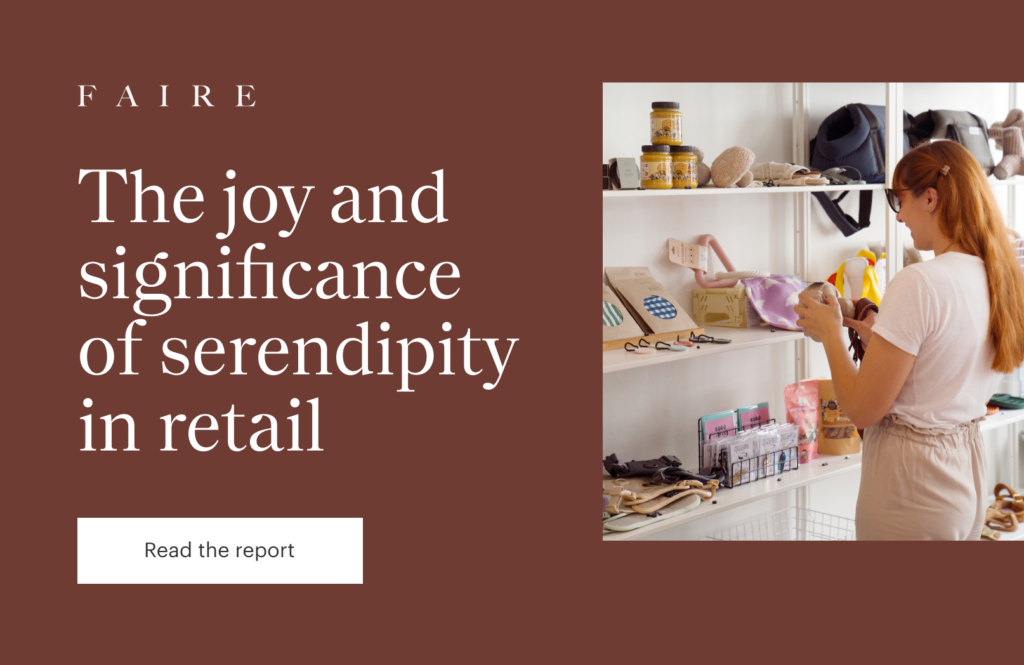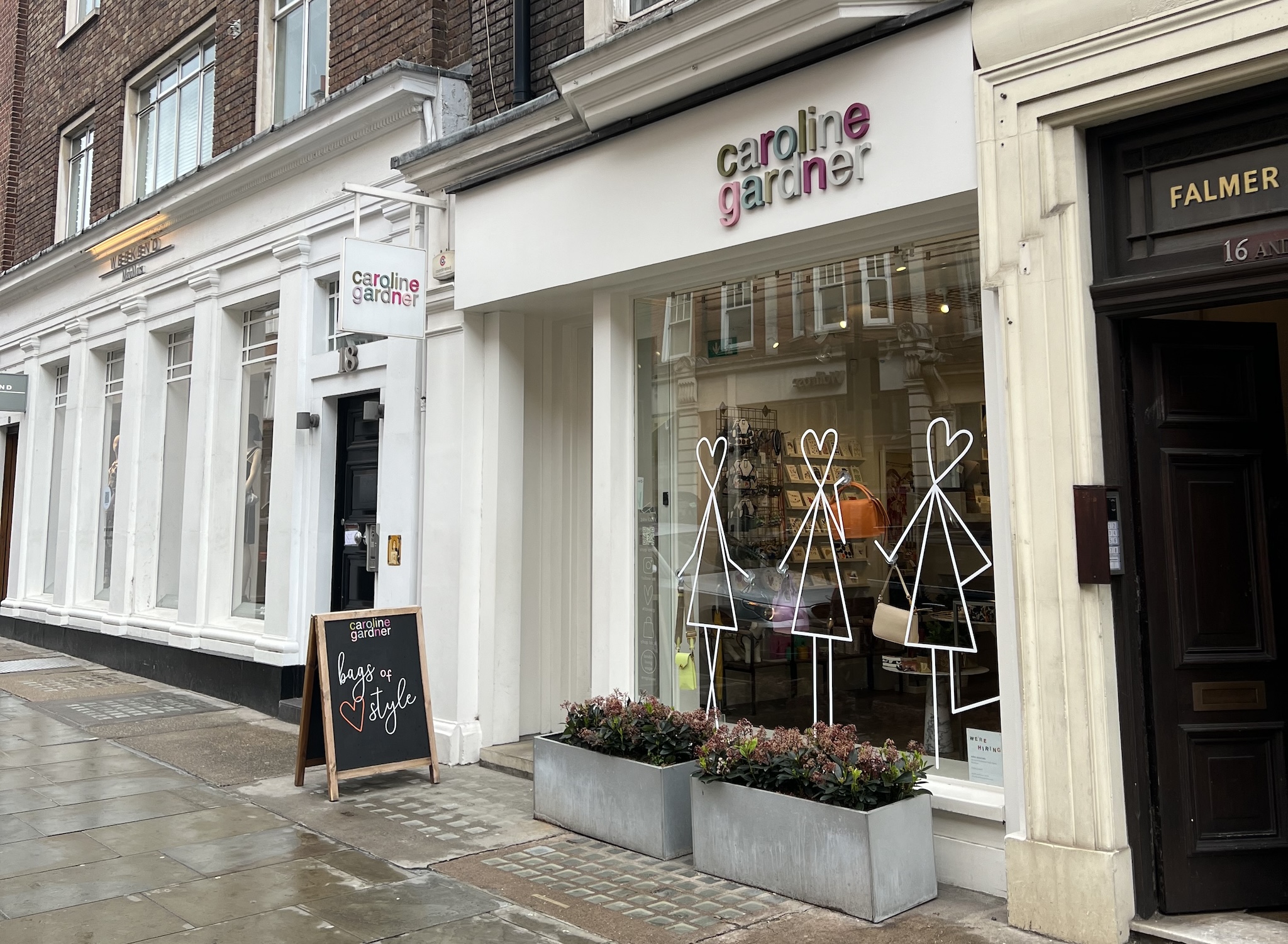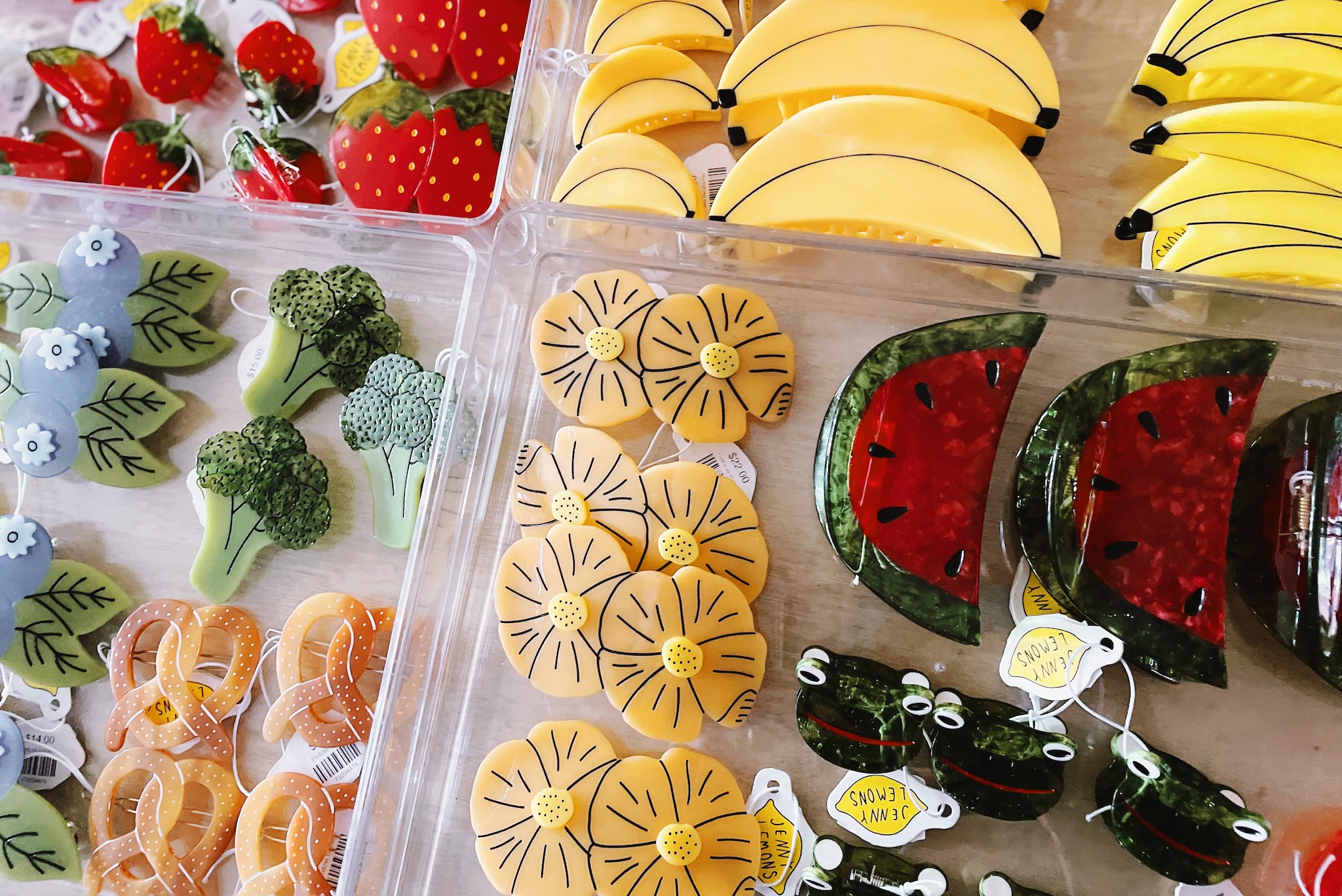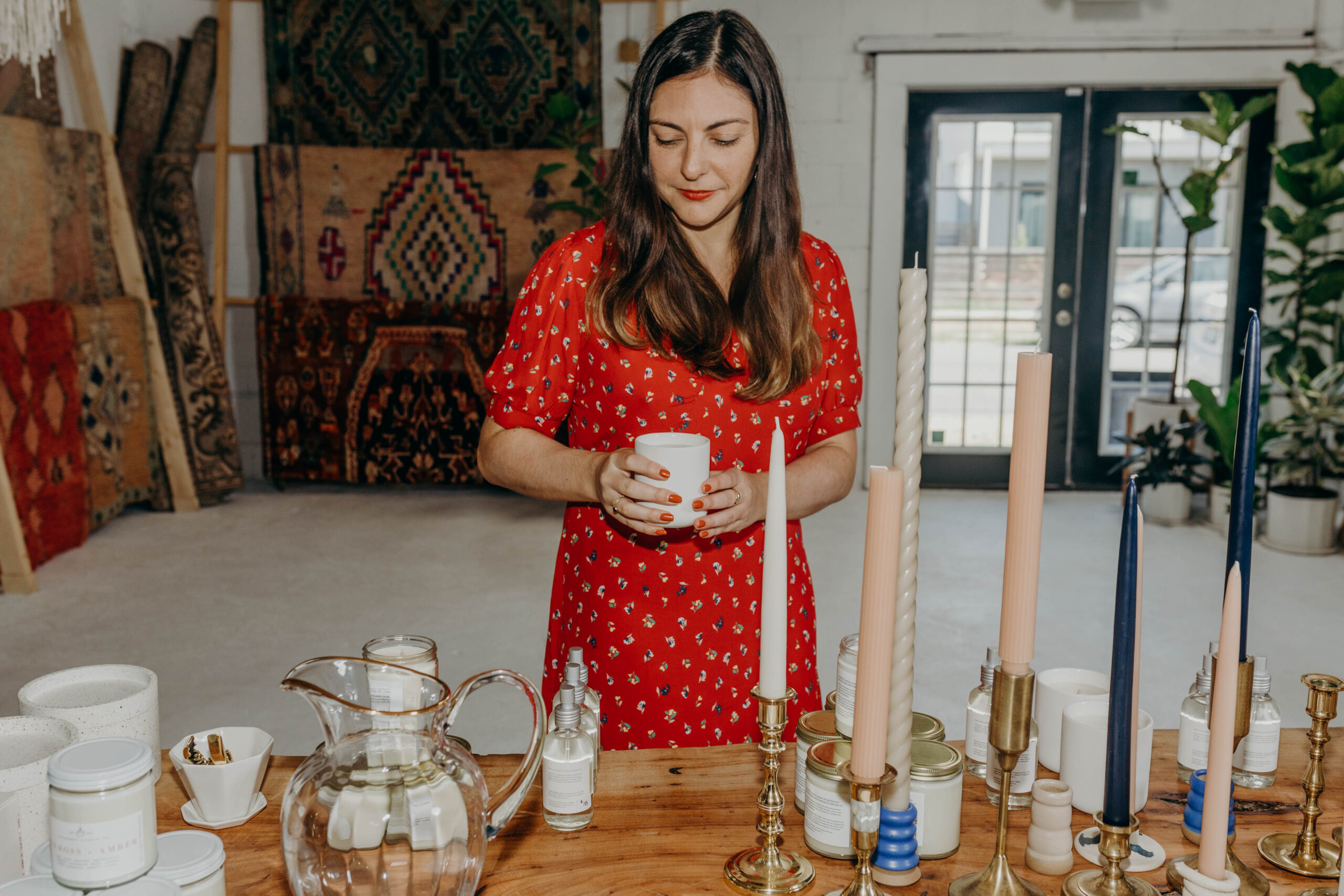
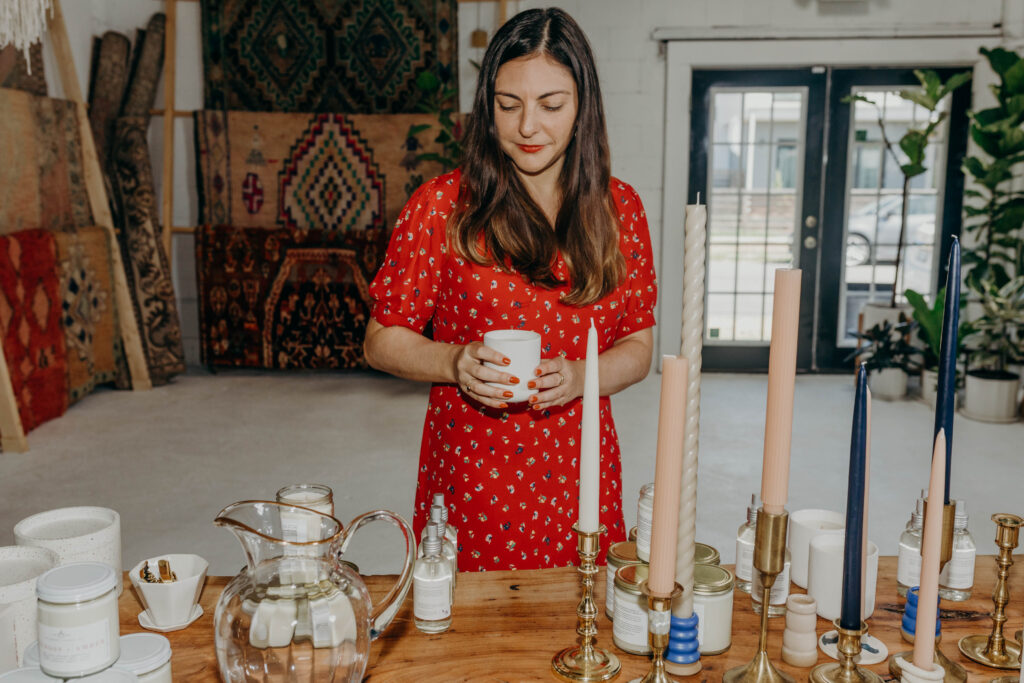
We’ve all experienced the pure joy of discovering a new store, perusing the goods, and buying something fun and unexpected. That kind of experience—an algorithm-free, spur-of-the-moment purchase—is one only a retail store can provide. And often it’s sensory cues, like tasty or fragrant samples, or even nostalgic music, that can lead to these moments of delight. (That algorithm may be tapping into people’s search histories, but it’s certainly not tapping into their senses.)
In our recent study about the significance of serendipity in retail spaces, we found that adding multisensory cues—anything shoppers experience through the five senses—can positively affect a shopper’s emotions, purchasing behavior, and even length of shopping time. In fact, research has shown that consumers stay in a store up to 51% longer if it contains multisensory cues.
Below, you’ll find ideas for sensory cues that will help you capitalize on shoppers who are seeking inspiration. By being intentional with how you incorporate these cues in your store, you can make that joyous feeling a reality for more shoppers, more often. With a mixture of sounds, sights, and smells, they may just want to stay awhile longer, get to know your brand story, and become loyal shoppers for life.
Sight
Let’s start with sight: Sure, it might seem obvious that you want your store to “look good,” but there’s so much more to it than that. When it comes to lighting, for example, shoppers spend more time in well-lit shops, where they can inspect what they’re looking at, with cooler lighting more suited to ones that require visual clarity (like electronic shops). For gift boutiques and high-end-goods stores, warm lighting provides a pleasant, more luxurious experience.
If you have merchandise displays, make sure they’re set up for surprise and discovery. Tease shoppers’ curiosity by making book covers partially visible and have some items “misshelved” to create texture and excitement, like a sparkling piece of costume jewelry draped over a ladder, or a cute teddy bear sitting in a mixing bowl. This creates a “cognitive break” from the organization and can spark interest and excitement.
If you stock an artisan with a particularly fascinating background—or who uses a material with a unique production story—consider making a notecard with the information and placing it by their merchandise. You could even color-code your notecards, so shoppers can easily identify if particular brands are women-owned, LGBTQ+-owned, or Black-owned. This can help shoppers develop emotional connections to your shop and makers, and create space for fandom.
Giselle Gyalzen does this at her shop, Rare Device, in San Francisco. She ensures every item in her shop has a story—and the benefits here are two-fold. For makers, she’s providing them with a platform to get noticed and sell their work. For shoppers, she provides an opportunity to learn, discover, and get emotionally invested.
Why is this so important? Customers who feel fully connected to a brand or retailer are 52% more valuable, on average, than those who are just “highly satisfied.”
Smell
In our report, we found that “scent in particular is well-suited for teeing up exploration and discovery. Pleasing smells enhance shoppers’ brand memory, risk-taking, variety-seeking, and curiosity.” Combined with visual stimuli, it can create an atmosphere where shoppers will feel at home—and want to come back for more.
At LA’s P.F. Candle Co., owners Kristen Pumphrey and Thomas Neuberger are experts in how certain scents can elevate a space and draw out emotions. “Feelings and emotion are deeply intertwined with scent—and scientists think the reason is the proximity between the olfactory gland and the hippocampus/amygdala (the parts of the brain responsible for processing memory and emotion),” says Pumphrey.
Of course, you don’t need to have a candle shop to light candles—and you don’t even have to light candles to indulge the olfactory senses of your shoppers. Consider putting warm spices, like cinnamon sticks and nutmeg, in jars around your merchandise. A well-placed vase with fragrant flowers or even a pine tree around the holiday season will make shoppers want to hang out, stay awhile, and even visit again.
Taste
For sweets shops and food retailers, providing samples is an easy way to delight customers and spark curiosity and conversation. What shopper wouldn’t want to come into a store with a display of chocolates ready to sample?
Even if you don’t carry food in your shop, there are ways to provide a tasty experience.
- If you have children’s toys, consider a gumball machine to show your playfulness.
- A large glass vase full of mints in a clothing store will keep shoppers refreshed.
- Tins of vintage candies can create nostalgia or taste memories while providing visual contrast to jewelry or bath products.
- Put together a little coffee and tea station, so shoppers can sip, warm up from a chilly day, and shop. Better yet: If you’re selling said coffee and tea (or even hot chocolate), let customers try it before they buy.
- Live in a warmer climate? Keep a pitcher of ice-cold lemon water by your front door to not only beckon potential customers but refresh them once they’re inside. Spas have been doing this for ages, and it works.
Hearing
Music has the power to welcome curious shoppers, excite them, and remind them of high school or a fun memory. It also has the power to send them running. (Who hasn’t walked into a store with super-loud music and walked out immediately?)
So when you’re thinking about music for your shop, consider what your shoppers might want to hear. Here are some ideas.
- If you have a luxury clothing store, play gentle beach noises or ambient sound to provide a soothing atmosphere for discerning shoppers to peruse. Think: the sound version of the softest cashmere scarf.
- Have a trendy gift shop where Gen-Zers stop in all the time? Lean on today’s pop icons and leave your door cracked open.
- If you sell music, play your bestselling album as a hook to draw shoppers in, or play something lesser-known with a sign about the artist to create some curiosity and spark conversation.
- If you’re looking to drive some extra traffic, clear out a spot to host local musicians for an acoustic set indoors.
- Get timely by playing only female artists for Women’s History Month or only Black artists for Black History Month. Is it a popular artist’s birthday? Play their hits all day. (And share why with your shoppers!)
Whatever you play, just be sure that when it comes to sound, start low. You can always turn up the volume later.
Touch
Touch is a huge differentiator for retail stores. Online, you can’t tell the difference between a fake leather belt and a real one. In person, all you need to do is feel it. So if you’re selling something tactile—something soft or spiky, cozy or comfortable—give your customers the chance to touch it.
Let shoppers sit on the chair, try on the belt, feel the weight of the pen. The more they can engage with your goods, the better. (Make sure there’s a mirror nearby so they can model the scarf and perhaps a guestbook to try out the pen, too.) If you have lots of merchandise in boxes, like toys or electronics, unbox a few so kids and adults alike can “play” before they buy.
When you’re placing items around your store for shoppers to touch and try out, consider accessibility as well. Are the items in a low enough spot where everyone can experience them? Will there be someone around to help out to answer questions or assist?
Some might say seeing is believing, but when it comes to retail, touch is a better bet.
Bringing it all together
As you begin to create multisensory experiences in your own shop, remember that you don’t need to spend too much or go large scale. It’s the small tweaks, like the ones we mentioned above, that can make the biggest difference.
Whether it’s scents or soundtracks, layouts or samples, these cues will help you tell your story, engage your customers, and guide them through a shopping experience they’ll want to have again and again. So design your shop as a place you want to spend your time, and the money will follow.
